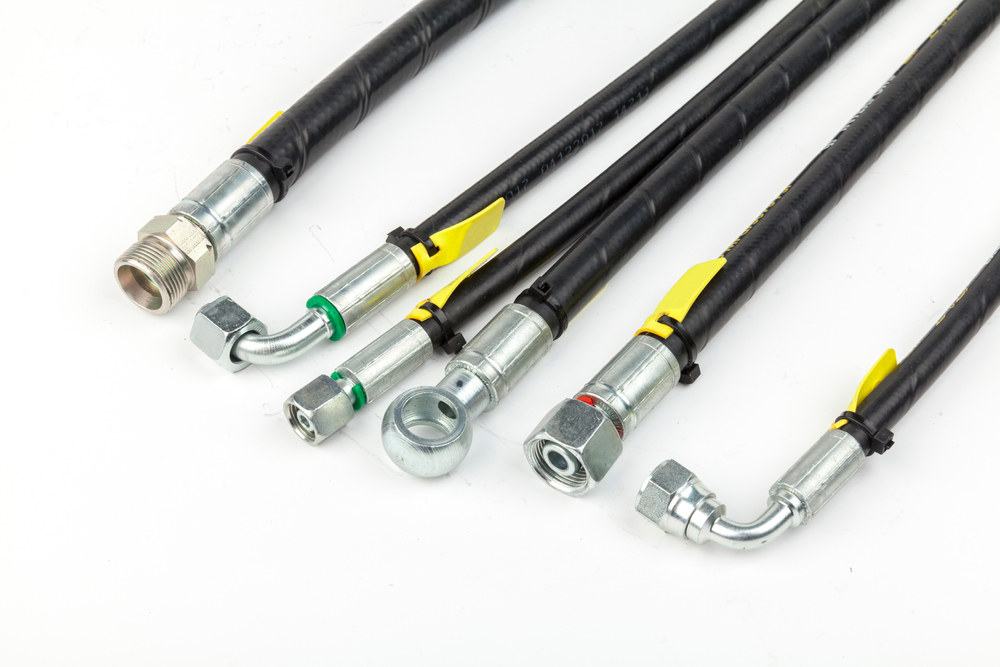
5 Key Hydraulic Hose Selection Factors to Consider
When dealing with hydraulic systems, selecting the right hydraulic hose is critical for ensuring efficiency, safety, and longevity. With so many options available, it’s easy to feel overwhelmed. However, by focusing on a few key factors, you can make an informed decision and ensure that your hydraulic system operates smoothly. This guide will outline the five essential factors to consider when choosing the right hydraulic hose.
Hydraulic Hose Basics
Before diving into specific factors, it’s important to understand what hydraulic hoses do and why they are vital to hydraulic systems. Hydraulic hoses are used to transport hydraulic fluid between components in a system, enabling the transfer of power and control. They must be able to handle high pressures and various operating conditions while maintaining flexibility and durability.
1. Pressure Rating and Working Pressure
What is Pressure Rating?
The pressure rating of a hydraulic hose indicates the maximum pressure it can safely handle. This is a crucial factor in hydraulic hose selection because exceeding the pressure rating can lead to hose failure, system malfunctions, or even safety hazards.
How to Determine the Right Pressure Rating
When choosing a hydraulic hose, it’s essential to match the hose’s pressure rating with the system’s maximum working pressure. It’s advisable to select a hose with a pressure rating higher than the system’s maximum pressure to account for potential pressure spikes and ensure a margin of safety.
Types of Pressure Ratings
Hydraulic hoses typically come with different types of pressure ratings, such as:
- Burst Pressure: The maximum pressure a hose can withstand before failing.
- Working Pressure: The pressure the hose can handle during normal operation.
- Minimum Bend Radius: The smallest radius at which the hose can bend without compromising its integrity.
2. Temperature Range
Importance of Temperature Tolerance
Temperature plays a significant role in the performance and lifespan of hydraulic hoses. Hoses must be able to handle the temperatures of the hydraulic fluid as well as the ambient conditions in which they operate.
Choosing the Right Temperature Range
Different hoses are designed to operate within specific temperature ranges. When selecting a hydraulic hose, consider:
- Fluid Temperature: Ensure the hose material can handle the maximum and minimum temperatures of the hydraulic fluid.
- Ambient Temperature: Factor in the environmental conditions, as extreme temperatures can affect hose performance.
Types of Temperature Ratings
Hydraulic hoses are available in various temperature ratings:
- Standard Temperature Hoses: Suitable for general hydraulic applications.
- High-Temperature Hoses: Designed for environments with higher operating temperatures.
- Low-Temperature Hoses: Ideal for cold environments where flexibility is crucial.
3. Hose Material and Construction
Types of Hose Materials
The material of the hydraulic hose affects its flexibility, durability, and resistance to various elements. Common materials include:
- Rubber: Offers flexibility and is suitable for a range of temperatures. However, it may not be as durable as other materials.
- Thermoplastic: Known for its resistance to abrasion and chemicals, thermoplastic hoses are suitable for a variety of applications.
- Metal Braided: Provides high strength and durability, often used in high-pressure applications.
Hose Construction and Reinforcement
The construction of the hose includes the type of reinforcement used, which impacts its strength and pressure rating. Common reinforcements include:
- Single Wire Braided: Suitable for medium-pressure applications.
- Double Wire Braided: Provides extra strength for higher pressure applications.
- Spiral Wire Reinforced: Offers high-pressure capabilities and is suitable for demanding conditions.
4. Fluid Compatibility
Understanding Fluid Compatibility
Hydraulic fluids come in various types, including mineral oils, water-based fluids, and others. Each type of fluid has different chemical properties that can affect the hose material.
Selecting a Hose for Specific Fluids
Ensure that the hydraulic hose material is compatible with the type of fluid used in your system. For example:
- Mineral Oils: Most standard hoses are compatible with mineral oils.
- Water-Based Fluids: Some hoses are specifically designed for water-based fluids and may require special materials.
- Chemically Aggressive Fluids: Use hoses made from materials resistant to chemical degradation if your system uses aggressive fluids.
5. Flexibility and Bend Radius
Importance of Flexibility
The flexibility of a hydraulic hose is essential for easy installation and operation. It allows the hose to navigate around obstacles and fit into tight spaces without compromising performance.
Understanding Bend Radius
The bend radius is the minimum radius at which a hose can be bent without causing damage or reducing its lifespan. A hose with too tight a bend radius can lead to kinking and reduced flow, while excessive bending can strain the hose and lead to premature failure.
Choosing the Right Bend Radius
When selecting a hydraulic hose, consider:
- Installation Space: Ensure the hose can fit into the available space without being bent excessively.
- Operational Flexibility: Choose a hose with the right flexibility for the operational needs of your system.
Conclusion
Selecting the right hydraulic hose is a critical aspect of maintaining an efficient and safe hydraulic system. By considering factors such as pressure rating, temperature range, hose material, fluid compatibility, and flexibility, you can make an informed choice that ensures optimal performance and longevity of your hydraulic system.
Royal Brass Incorporated
Welcome Royal Brass Incorporated! We are your 3rd generation, family-owned, local hose supplier! Our family has dedicated our services to supplying northern California with all types of hoses, fittings, flanges, regulators, valves, adapters, and gauges. We pride ourselves on having the most extensive inventory in northern California. Our inventory ensures that we can fix most products on site, the same day. Here at Royal Brass Incorporated, we only hire qualified individuals who are trained in factory sales. Our fully stocked warehouses ensure that we can fill your hydraulic and pneumatic hose, tubing, and fitting needs on time, every time. High-quality customer service is our goal and has been since 1952. Stop by or contact us today!
Categorised in: Hydraulic Hose





